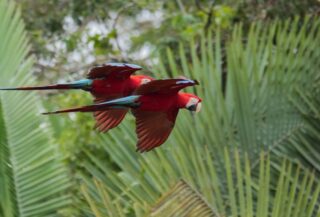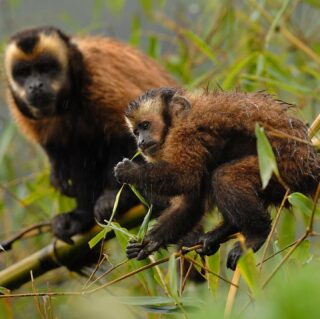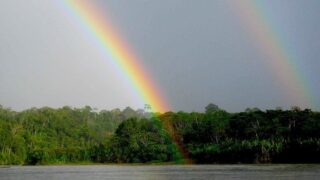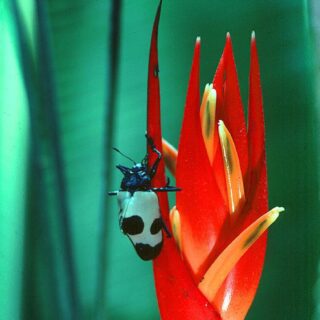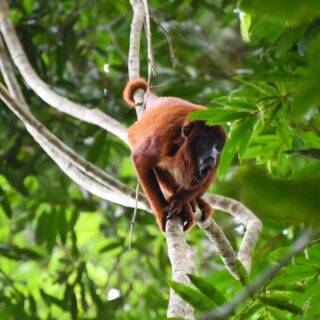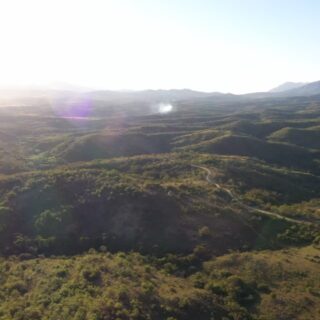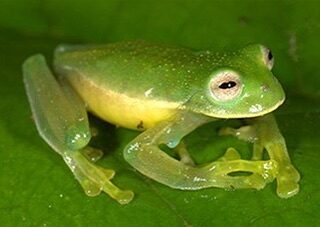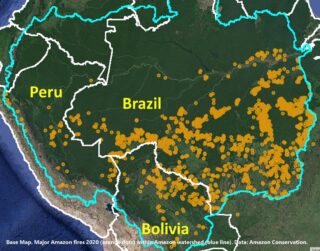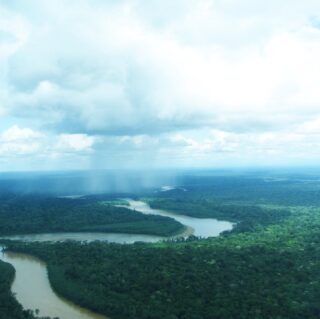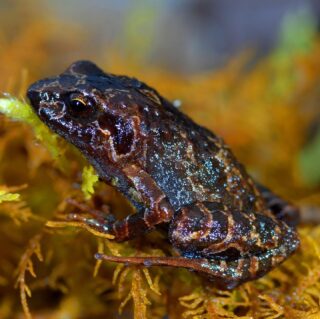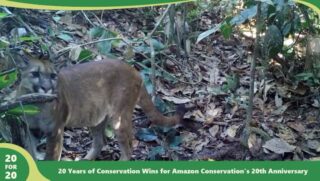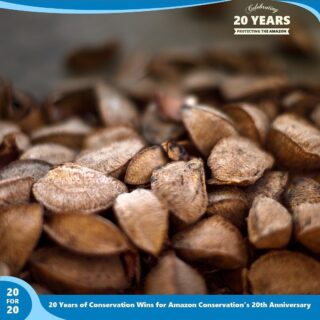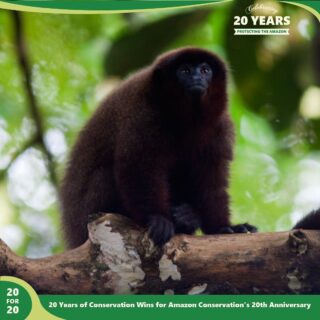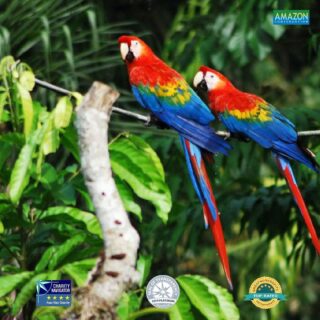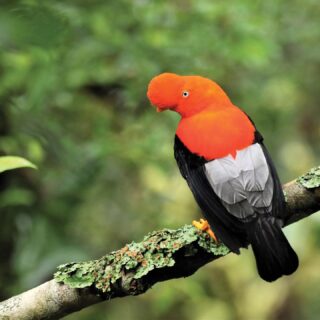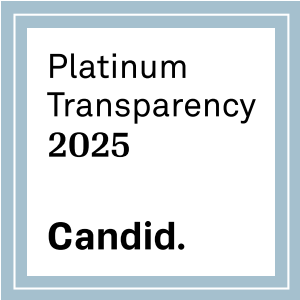Peru Faces Rising Threat as Illegal Gold Mining Expands into Nine Amazon Regions
August 26, 2025
A 2025 Status Report by Amazon Conservation’s sister organization, Conservación Amazónica–ACCA, warns that illicit activity is consolidating along Peru’s borders with Ecuador, Colombia, and Bolivia, while also expanding into the interior of Peru from Madre de Dios to Cajamarca and Pasco.
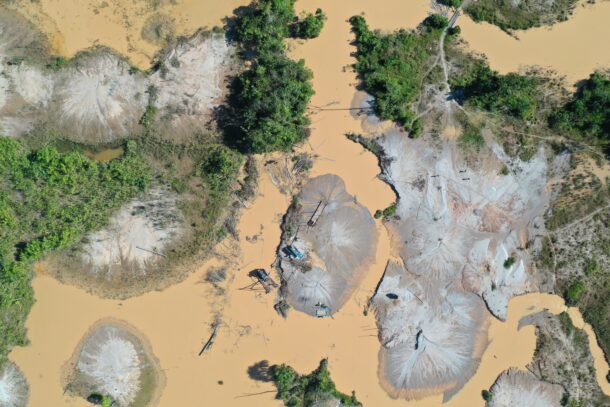
Lima, August 25, 2025 – Illegal gold mining is emerging as one of the main threats to the Peruvian Amazon. An analysis of the current situation was presented at an event in Lima today on “2025 Gold Mining in the Peruvian Amazon, How Are We Doing?” and warns that this illegal activity is already taking place in nine Amazonian regions of the country, affecting up to 73 Indigenous communities and more than 250 bodies of water. This marks a national environmental and social crisis.
During the presentation, it was noted that, in just one year, illegal mining has spread from seven to nine regions with activity now in Cajamarca and Pasco. Madre de Dios remains the epicenter with more than 11,500 hectares (28,400 acres) deforested in the last year. The buffer zone of the Tambopata National Reserve experienced the most significant increase, accounting for 13% of all illegal mining in the region.
This region includes La Pampa, which was once a symbol of the fight against illegal mining activity and is now completely invaded. In this area alone, there are more than 1,600 dredgers, a 21% increase compared to 2024, reflecting the failure of strategies used in recent years to control the spread.

In Loreto, the Nanay River saw a record high of 42 active dredgers. Meanwhile in Huánuco, 1,763 hectares (4,356 acres) of forest were reported deforested in a single year, including within the Panguana Private Conservation Area.
At the event in Lima, warnings arose about potential conflicts that may emerge from INGEMMET’s (Peru’s Geological, Mining, and Metallurgical Institute) system for managing mining concessions. Of INGEMMET’s 1,036 new mining applications, 136 overlap with Indigenous communities, 48 with protected areas, and 3 with Indigenous reserves; another 693 overlap with rivers and streams. New illegal frontiers are emerging in Ucayali, Cajamarca, and Pasco.
“Hot borders”, an ignored danger
The presentation also demonstrated that illegal mining is no longer limited to the interior of the country. Illegal mining is now established along border regions, with active enclaves in the Chinchipe and Condorcanqui basins (Ecuador), in the Putumayo tri-border area (Colombia), and on the Madre de Dios River (Bolivia). These “hot borders” confirm how urgently Peru must coordinate action with neighboring countries, beyond the isolated actions implemented within its borders.
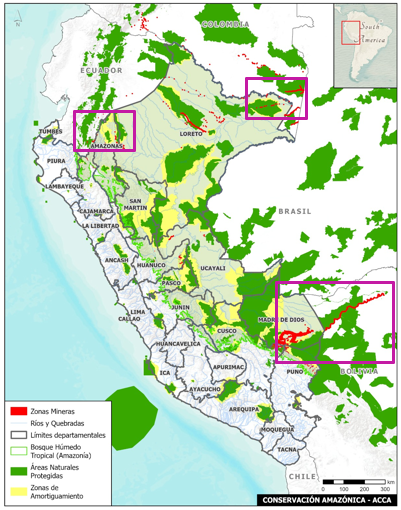
“This panorama is a clear reflection of how the current political situation—including the abandonment of rural and border areas—has allowed the expansion of this illicit activity. In many cases, illegal mining has mutated from a socioeconomic problem into an organized crime structure that erodes not only the Amazon’s riverbeds and forests, but also social structures and governance spaces,” said Sidney Novoa, Director of GIS and Conservation Technologies at Conservación Amazónica-ACCA.
Two unpublished studies were also presented at the event: one on the impact of illegal mining in priority conservation areas in the Peruvian Amazon, and another on the economic valuation of the impacts of illegal gold mining in the Nanay River basin, both of which provide evidence of the magnitude of the environmental and social problem in the region. You can access these studies here:
Valorización Económica de los Impactos de la Minería Ilegal de Oro en la Cuenca del Rio Nana
The event in Lima on “2025 Gold Mining in the Peruvian Amazon: How Are We Doing?” was carried out within the framework of the project “Reducing the Advancement of Illegal Gold Mining and its Impacts in Priority Biodiversity Areas, Conservation Corridors, and Transboundary Landscapes in Colombia, Peru, and Brazil,” funded by the Gordon and Betty Moore Foundation with support from Conservación Amazónica–ACCA, the Peruvian College of Engineers, and the organizations that make up the Illegal Mining Observatory.
About Conservación Amazónica–ACCA
Conservación Amazónica–ACCA is a non-profit organization that has been working in the Peruvian Andes Amazon for 25 years, focusing its efforts on three lines of action: science and technology, protecting natural areas, and empowering people. For more information, please contact: comunicaciones@conservacionamazonica.org
About Amazon Conservation Association
Amazon Conservation is an international conservation nonprofit working for the past 25 years towards building a thriving Amazon. The organization’s holistic approach focuses on working with local partners and allies to protect wild places, empower people, and put science and technology to work for conservation.

